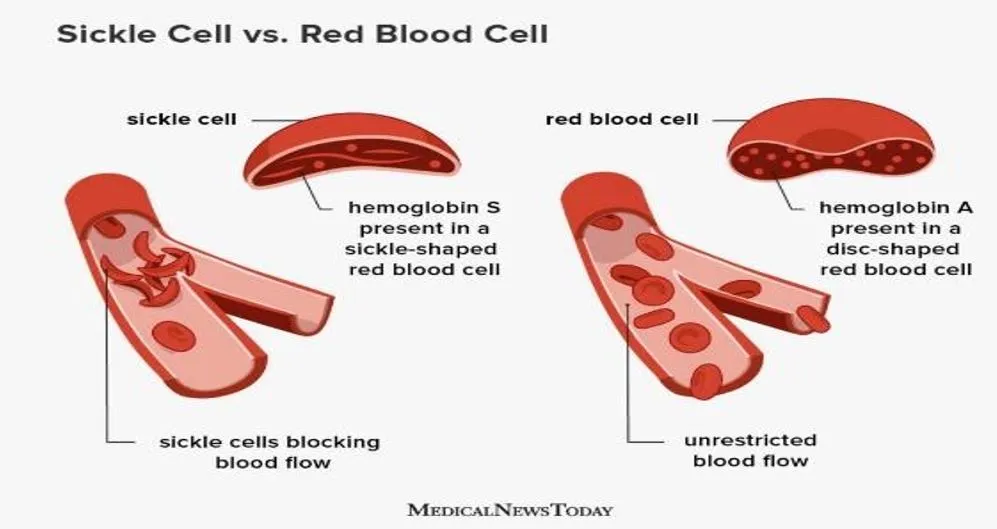

4th June 2024 (11 Topics)
Context
The Indian Council of Medical Research (ICMR) has embarked on a critical mission to combat sickle cell disease, a prevalent health concern in India.
A key obstacle in this fight is the lack of hydroxyurea formulations specifically designed for paediatric patients, making precise dosing a challenge.
To address this pressing issue, the ICMR has issued a call to collaborate on the joint development and commercialization of paediatric formulations of hydroxyurea.
About Sickle Cell Disease:
- Sickle cell disease is one of India's most prevalent monogenic disorders, posing substantial health risks.
- India faces a significant burden of sickle cell disease, with over 20 million affected individuals.
- It is an inherited blood disorder marked by defective hemoglobin.
- It inhibits the ability of hemoglobin in red blood cells to carry oxygen.
- Sickle cells tend to stick together, blocking small blood vessels causing painful and damaging complications.
- Symptoms: Anemia, Pain crisis, or sickle crisis, acute chest syndrome, splenic sequestration (pooling). stroke, jaundice, priapism (painful obstruction of the blood vessels in the penis by sickle cells)
- Treatment: Blood transfusions, Vaccinations and antibiotics, Folic acid, Hydroxyurea, Bone marrow transplant.
|
Red Blood Cells (normal Haemoglobin) |
Cells with Sickle Cell Haemoglobin |
|
They are smooth, disk-shaped, and flexible, like doughnuts without holes. |
They are stiff and sticky. When they lose their oxygen, they form into the shape of a sickle or crescent, like the letter C. |
|
They can move through the blood vessels easily. |
These cells stick together and can’t easily move through the blood vessels. This can block small blood vessels and the movement of healthy, normal oxygen-carrying blood. The blockage can cause pain. |
|
Normal red blood cells can live up to 120 days. |
Sickle cells only live for about 10 to 20 days. They may be destroyed by the spleen because of their shape and stiffness. The spleen helps filter the blood of infections. |
 |
|
Hydroxyurea's Role:
- Hydroxyurea, a myelosuppressive agent, shows promise in treating sickle cell disease and thalassemia.
- However, current hydroxyurea formulations are not suitable for paediatric use, complicating treatment protocols. This gap complicates treatment, as administering appropriate doses to children becomes cumbersome and less accurate.
- ICMR has now called for joint development and commercialization of low-dose or paediatric oral formulations of hydroxyurea.
- The aim is to facilitate better titration of the drug, reducing dose-related side effects and ensuring more accurate administration.
- This move aligns with the launch of the National Mission to eliminate Sickle Cell Anaemia/SCD by 2047, highlighting the government's commitment to tackling this health challenge.
Government Interventions
|
PYQQ. Consider the following statements in the context interventions being undertaken under Anaemin Mukt Bharat Strategy : (2023)
How many of the statements given above are correct?
Solution: (c) Statement 1 is incorrect: Prophylactic Iron Folic Acid supplementation (not Prophylactic calcium) given to children, adolescents, women of reproductive age and pregnant women, irrespective of anemia is a key continued intervention. |
More Articles



